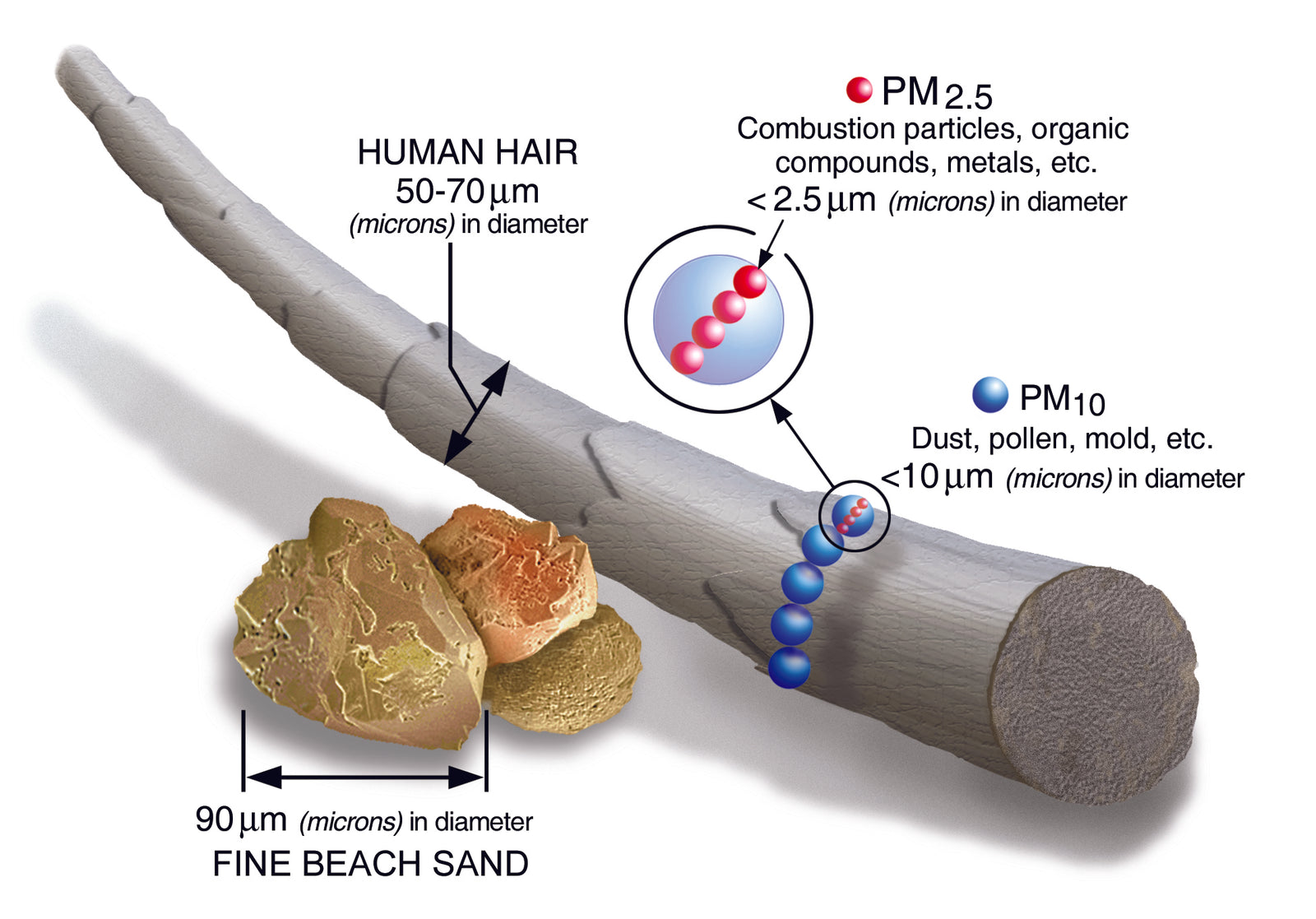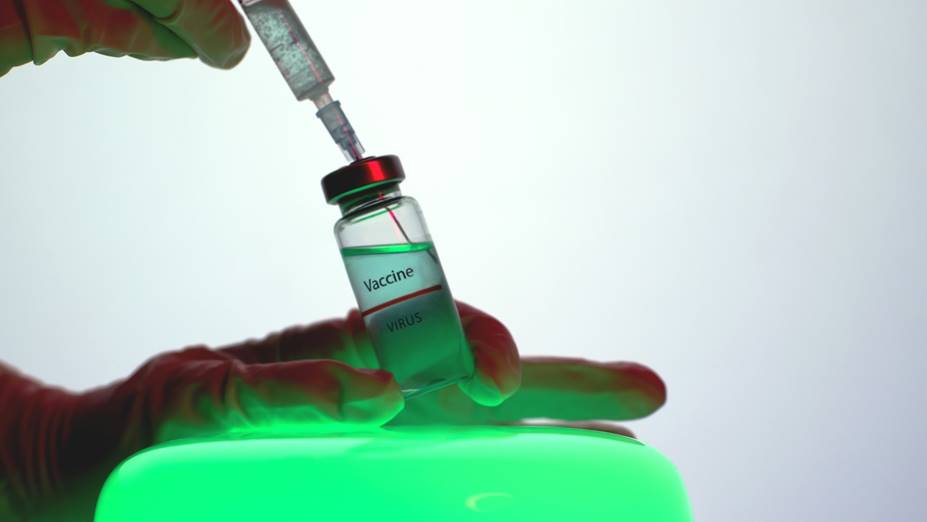Size Matters

It's no surprise that high-end air purification systems are the best defense for fighting aerosol-based biological pathogens like the coronavirus. Air purifiers typically include a pre-filter to remove large particles like pet hair, dust, and other particulates large enough to see with the human eye, and a second filtration system like HEPA, electrostatic or ionic to remove smaller, ultra-fine particles. Many of our customers know these basic principles for purifying spaces in their homes, offices, or businesses. However, applying these principles to Covid-19 is a lot more complicated than merely removing particles from the air. First and foremost, the filtration system must efficiently remove the smallest of particles.
The United Nations World Health Organization (WHO) was founded in 1948 to focus on a shared mission, "the attainment by all peoples of the highest possible level of health." Primarily funded by a system of payments from member states and private philanthropists.
It's interesting that in 2019, the year of Covid, the WHO's operating budget was $5.2B, in which the USA contributed 15.9%. Bill Gates contributed 9.4% of the funding through his foundation, while China only contributed .2%. No one could have guessed the financial burden ahead.
The WHO plays a pivotal role in the battle against the spread of infectious diseases around the world. The collective work of WHO members have resulted in the near eradication of smallpox, polio, tuberculous, and malaria. And the advancement in treatments and vaccines for Ebola, HIV/AIDS, and other diseases.
The World Health Organization also focuses on non-communicable conditions like lung and respiratory disease, cancer, and food safety, to name a few. Specifically, to address cancer's global challenges, the WHO created the International Agency for Research on Cancer (IARC) in 1965. Its role was to research, better understand, and battle cancer. The IARC established standards to measure, classify, and prevent exposure to individual particles. Particles that are known to be radioactive or non-radioactive (natural or synthetic) carcinogens. The IARC identified chemicals, compounds, and biologicals that the human respiratory system had difficulty filtering and defined standards to reduce the amount of these atmospheric particles that could enter the body based on size.

Source: EPA https://www.epa.gov/pm-pollution/particulate-matter-pm-basics
Course particle matter that is 10 micrometers (μm) or smaller is categorized as PM10 and documented to increase the rate of lung cancers by 22%. Ultrafine particles, measuring 2.5 μm or PM2.5, reportedly increase the rate of cancer to 36%. They are resulting in approximately 4.2 million deaths per year globally. You'll notice that these particles (in the diagram above) consist of a mixture of human-made and naturally occurring particles. So even if you live in an environment not typically exposed to carbon-based pollutants, Mother Nature can still deliver forest fires, pollen, and dust from storms that can be equally harmful.
There is an excellent article and video that expands on PM2.5 particles' sources and the potential impact these airborne particulates can have on the human body if not managed effectively by undark.org. Undark is an outstanding source to learn more about the topic.
Source https://undark.org/breathtaking/
Biologicals, like viruses, bacterium, and specific allergens, as well as smog and fine smoke particle, often measure considerably smaller from 1 μm to .001 μm. The Covid-19 virus has been measured at .125 μm.
The elimination or filtering of particles of this size is a difficult challenge for most air purification systems. The USA defined HEPA standard requires these filters to capture and retain 99.97% of particles whose diameter is equal to .3 μm. Medical-grade air purification systems increase this number to 99.995%, but devices still have to filter out .125 μm virus particles to capture or destroy the Covid-19 virus.
One approach is the use of HEPA filters. HEPA filtration systems leverage three different techniques interception, impaction, and diffusion. Interception is the method where a particle traveling along a line of flow comes within one radius of a HEPA filter fiber and adheres to it where it is stored until the filter is replaced. Additionally, HEPA filters utilize impaction, where larger particles are too big to adhere to the fiber and get pushed around the fibers into a fiber web where it is then trapped. Finally, diffusion filters particles around .1 μm. These particles are so small that they collide with gas molecules within the filter and bounce around until they become trapped by one of the fibers. It's not a guaranteed result, but it's often easier to capture .1 μm particles than those at 2.5 μm, which tend to get through many filters.
A second approach is to incorporate germicidal spectrum ultraviolet light. The UV light attacks the virus's cells during the filtration process, ensuring that should small viral or bacterial pathogens get through the filtration solution used, whether HEPA, electrostatic or ionic, it will be rendered harmless.
We partner with Kinyo Technologies for one of our air purification solutions. The Kinyo product is based on an electrostatic filtration platform and includes a germicidal ultraviolet sterilization process. The device (model KY-APS-500V – commercial medical-grade) was tested in a Level 3 biomedical lab in Hong Kong in August 2020 and produced an impressive sanitizing rate of 99.46% of the Covid-19 virus.
Whether your goal is to reduce the smoke in the home due to forest fires, eliminate mold and mites, or fight airborne viruses as we enter cold and flu season. It makes sense to learn more about these potentially harmful tiny particles and how best to protect your family, employees, patients, and customers.
Link to EPA cover picture
https://www.epa.gov/pm-pollution/particulate-matter-pm-basics
Also in News

An Unusual Journey to Normalcy

The History of Vaccines: What it Means for Coronavirus


